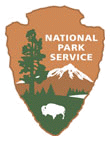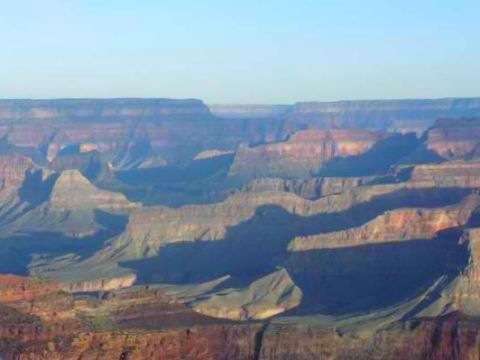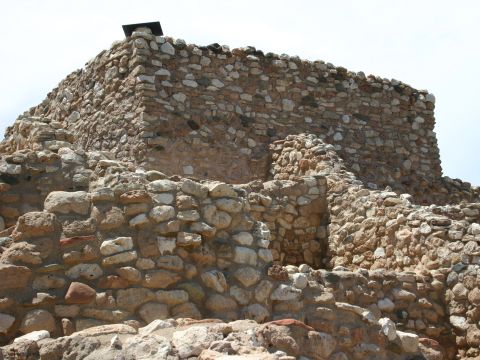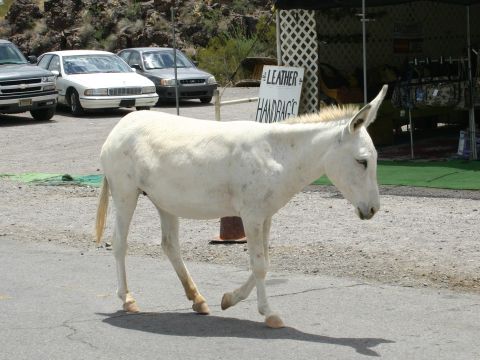This morning, we woke up in our favorite hotel in Avalon. We were having our continental breakfast on the balcony when this uninvited, but not unwelcome guest flew in for a bite.

This morning, we woke up in our favorite hotel in Avalon. We were having our continental breakfast on the balcony when this uninvited, but not unwelcome guest flew in for a bite.

The Santa Catalina Island Company added a new webcam on the famous Casino to the existing Pavillion Cam across the bay. This is the 7AM picture seen today from the new Casino Cam. Typical of the last weeks of summer, harbor moorings are nearly sold out.

Update: Banning House Webcam located at Two Harbors.
Happy Birthday, National Park Service!
 On August 25, 2006, the National Park Service celebrates its 90th birthday. Created in 1916 under the Organic Act, Congress and President Woodrow Wilson charged the Park Service with overseeing 35 public land units to preserve America’s vast diversity for future generations.
On August 25, 2006, the National Park Service celebrates its 90th birthday. Created in 1916 under the Organic Act, Congress and President Woodrow Wilson charged the Park Service with overseeing 35 public land units to preserve America’s vast diversity for future generations.
Much has changed in 90 years! Now, not only does the National Park Service manage all of America’s 390 park units, its responsibilities have grown into complex fields, such as scientific research, archeology, historic preservation, interpretation and education outreach. Over 84.4 million acres of parkland provides habitats for 369 threatened or endangered species, houses 100 million items in museum collections, contains 1.5 million archaeological sites and protects 27,000 historic structures. Our beloved National Park sites are visited 277 million times a year, employ 20,000 employees, and receive valued assistance from 144,000 volunteers per year.
Can’t think of the just right birthday gift? Donate to the National Park Foundation to ensure America’s greatest collection of natural, cultural and historic sites are taken care of for the next 90 years!
Story courtesy NPS Newsletter
We already have enjoyed our summer vacation with a stop at the Grand Canyon but always enjoy a fresh look at that magnificent spectacle. Today’s visit to the National Park System‘s Grand Canyon Webcam yielded this view from Yavapai Point on the South Rim, elevation 7084 feet.

This nice little collage of panoramas came from our trip to Arizona this summer. Please enjoy these nice views from the majestic Grand Canyon. If the show is over, click on “Replay.”
Tuzigoot is the Apache word meaning “crooked river.” This was the name arbitrarily given the Sinagua Native American ruins above a big bend in the Verde River near Cottonwood, AZ. This was an interesting stop that we made during our brief but fun vacation. Cap’n Bob also took a 3D picture of this ruin (you will need a pair of red/blue 3D glasses).

From the National Parks page on Tuzigoot National Monument
Crowning a desert hilltop is an ancient pueblo. From a roof top a child scans the desert landscape for the arrival of traders, who are due any day now. What riches will they bring? What stories will they tell? Will all of them return? From the top of the Tuzigoot Pueblo it is easy to imagine such an important moment. Tuzigoot is an ancient village or pueblo built by a culture known as the Sinagua. The pueblo consisted of 110 rooms including second and third story structures. The first buildings were built around A.D. 1000. The Sinagua were agriculturalists with trade connections that spanned hundreds of miles. The people left the area around 1400. The site is currently comprised of 42 acres.
Today, we drove part of Historic Route 66 from Kingman, Arizona through Oatman, Arizona. Wild but tame burros wander the streets of Oatman accepting handouts from tourists. I snapped a picture of this nice white burro walking up the street.

Oatman began about 90 years ago as a mining tent camp and quickly became a flourishing gold-mining center. In 1915, two miners struck a $10 million gold find, and within a year, the town’s population grew to more than 3,500.
Oatman was named in honor of Olive Oatman, who was kidnapped as a young girl by Mojave Indians and later rescued in 1857 near the current site of the town. Oatman was served by a narrow gauge rail line between 1903 and 1905 that ran 17 miles to the Colorado river near Needles, California.
But both the population and mining booms were short-lived. In 1921, a fire burned down many of the smaller shacks in town, and three years later, the main mining company, United Eastern Mines, shut down operations for good. Oatman survived by catering to travelers on old U.S. Route 66. But in the 1960s, when the route became what is now Interstate 40, Oatman almost died.